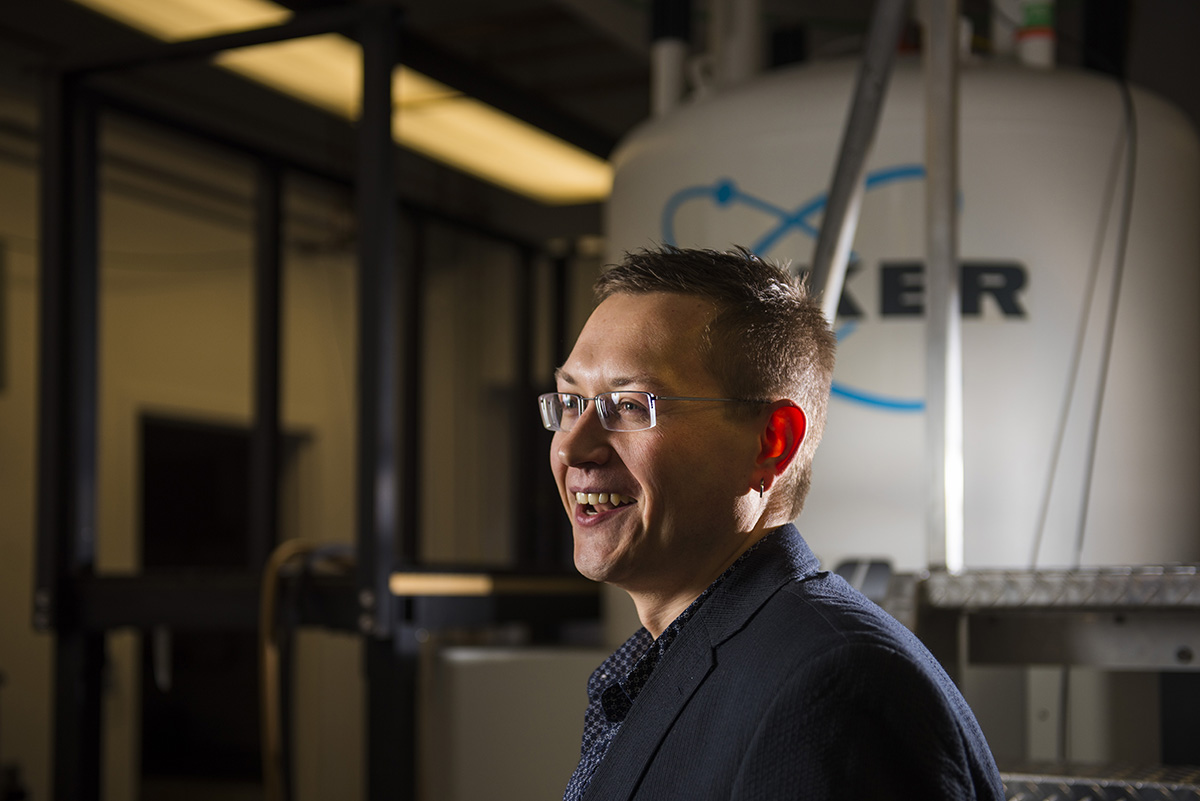
Professor Vladimir Michaelis is bringing next-generation of materials science to the University of Alberta. Photo credit: John Ulan
University of Alberta chemists are one step closer to developing safer and more efficient solar cell materials.
The new material-hybrid perovskites-presents another option expanding beyond traditional silicon as a material for solar cells, lower in cost and with potential to be more efficient. The challenge? As methylammonium lead iodide hybrid perovskite degrades, it's primary degradation compound is lead iodide, which can cause its own set of environmental challenges.
"Balancing our global hunger for energy, while mitigating it's environmental impact remains a key driving force for many researchers. Hybrid perovskites may be one material that could help society achieve this, however we need to ensure lead-containing materials are stable to heat and water or seek lead-free versions," explained Vladimir Michaelis, assistant professor in the Department of Chemistry. "The purpose of this research is to understand how we can reduce some of the potential faults in hybrid perovskites as a material for solar cells."
Using nuclear magnetic resonance (NMR) spectroscopy, Michaelis is studying the structure, properties, and potential functions of perovskites at the atomic-level. Michaelis and his research group have studied the methylammonium lead halide and the formamidinium lead halide hybrid perovskites, improving their understanding of how the material degrades, and mixing the halides to improve stability and photovoltaic tunability bringing them one step closer to mitigating the effects of using lead, which in turn they hope will lead science one step closer to an alternative material for cheaper, more efficient solar cells.
"Ultimately, we are trying to make a material that will not degrade, something that is stronger and more stable, that will not be affected by humidity or temperature cycling," said Michaelis. "The goals are to keep costs low and efficiency high, to further diversify Canada's energy portfolio and reduce our long-term environmental impact."
Michaelis' research on perovskites has been published in various journals, including Chemistry of Materials and Marcromolecules.